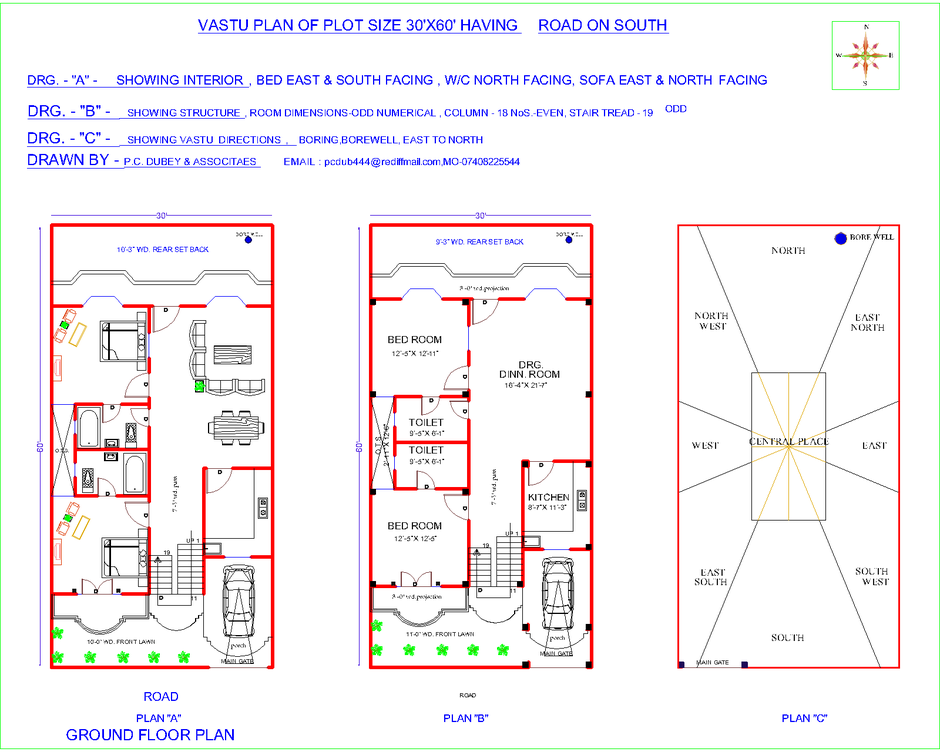Vastu Shastra is an ancient Hindu system of designing house plans and layouts that are in harmony with the elements of nature. This ancient practice promotes and sustains a balanced relationship between humans and nature, and serves as a great way to incorporate the principles of nature into a home – from shape and orientation to geometry and arrangement. Here are 8 key principles of Vastu Shastra for house design that you should know before you begin designing your own dream home. The first and most important principle of Vastu is the five-directional or Pancha Koshas. This involves keeping the house aligned in five directions namely east, west, north, south, and south-east. This ensures that all important areas in the house are filled with positive energy that will bring health and prosperity to all its inhabitants. The second principle of Vastu is the Vastu Purusha Mandala. This is a diagram that makes all the elements of a house visible and creates a balance between them. It consists of several concentric circles that represent the different levels of the house and how they work together. By following the Vastu Purusha Mandala, architects and designers can design a home that is perfectly aligned with the elements of nature. The third principle of Vastu is direction and placement. This involves considering the natural elements that affect each direction and arranging the house accordingly. One should make sure that each room is positioned according to its purpose. For example, the kitchen should be located in the southeast while bedrooms should face the east or north. The fourth principle of Vastu is the shape and geometry of the house. The shape of the house affects its energy flow and this is why architects and designers should consider which shapes are most suitable for the house plan. Different shapes create different energies and therefore each shape should be chosen with great care. The fifth principle of Vastu is the arrangement of the elements of the house. This involves the positioning of furniture, doors, windows, and other elements in the house. It is important to ensure that all the elements in the house are in harmony and work together. This will help create an atmosphere of peace and tranquility in the home. The sixth principle of Vastu is the Vastu for home design. This involves considering the effect of the sun and the stars on the house layout. Architects and designers should be aware of the different types of energy that come from the natural elements and consider them during the design process. The seventh principle of Vastu is the Vastu for house plans. This involves creating a plan for the construction of the house and taking into account the direction and placement of different elements. It is important to think about which materials and colors should be used in the house and how they will interact with the elements of nature. This ensures that the home will have an inviting and peaceful energy. The eighth principle of Vastu is the Vastu tips for house design. This involves considering the placement of furniture, beds, and other objects in the house and ensuring that they are placed in accordance with the Vastu principles. This ensures that the energy flowing through the house is balanced and that the occupants will experience health and peace. By following these eight key principles of Vastu Shastra, homeowners can create a house that is in harmony with the elements of nature, and bring prosperity and happiness to the occupants. Whether you are designing your own home or hiring an architect to do the job, make sure you keep these tips in mind for a successful house-building experience.Vastu Shastra House Designs - 8 Vital Tips for Your Home
Finding the Perfect House Plan as Per Vastu: Create a Beautiful Living Space
 Choosing a house plan as per Vastu Shastra can be a great way to create a beautiful and wellness-promoting living space. A
Vastu-compliant building
is meant to bring out a balance and harmony to the structure and the family living in it. To do this, many Vastu principles must be carefully considered when planning out the design of the house.
When selecting a
house plan design
that fits with Vastu standards, the orientation of the house plays a key role. The entrance to the house should be located in the east, north, or northwest position. It is also important that the main door of the house not face any other doors or opposing rooms. The angles of the interior walls should also be taken into account, as shoulders should not be facing directly towards the entrance of the room. Additionally, bedrooms should not face towards the north or east direction.
When choosing a particular
house plan
, the interior layout of the house can also promote well-being and prosperity. For instance, the living room should be placed in the northeast direction of the house, while the kitchen should be placed in the southeast. Furthermore, it is ideal to avoid having a bathroom in the southeast corner. It’s also a good idea to reserve some spaces like the one in the north or east direction for utility rooms like store rooms, water tank, and sheds.
The bedroom should also be designed with particular care.
Vastu house plans
prioritize the placement of heavy furniture in certain directions and placements. For instance, the bed should be placed against the southwest wall and it should be aligned in the north-south direction for better peace of mind. Placing the dressing table against the southwestern wall diagonally opposite to the bed is beneficial.
Lastly, it is important to give thought to the external walls and the gardens outside the house in a
Vastu-compliant plan
. Gardens should be placed in the northeast and northwest parts of the house. Trees can be added in the eastern and northern directions. Ideally, walls should be of the same height and should not have any inclined sides.
By taking into account the many Vastu principles when designing a house plan, the result can be an aesthetically pleasing and harmonious living space. If adapted, Vastu principles could prove to be beneficial for families looking for a balanced and tranquil living experience.
Choosing a house plan as per Vastu Shastra can be a great way to create a beautiful and wellness-promoting living space. A
Vastu-compliant building
is meant to bring out a balance and harmony to the structure and the family living in it. To do this, many Vastu principles must be carefully considered when planning out the design of the house.
When selecting a
house plan design
that fits with Vastu standards, the orientation of the house plays a key role. The entrance to the house should be located in the east, north, or northwest position. It is also important that the main door of the house not face any other doors or opposing rooms. The angles of the interior walls should also be taken into account, as shoulders should not be facing directly towards the entrance of the room. Additionally, bedrooms should not face towards the north or east direction.
When choosing a particular
house plan
, the interior layout of the house can also promote well-being and prosperity. For instance, the living room should be placed in the northeast direction of the house, while the kitchen should be placed in the southeast. Furthermore, it is ideal to avoid having a bathroom in the southeast corner. It’s also a good idea to reserve some spaces like the one in the north or east direction for utility rooms like store rooms, water tank, and sheds.
The bedroom should also be designed with particular care.
Vastu house plans
prioritize the placement of heavy furniture in certain directions and placements. For instance, the bed should be placed against the southwest wall and it should be aligned in the north-south direction for better peace of mind. Placing the dressing table against the southwestern wall diagonally opposite to the bed is beneficial.
Lastly, it is important to give thought to the external walls and the gardens outside the house in a
Vastu-compliant plan
. Gardens should be placed in the northeast and northwest parts of the house. Trees can be added in the eastern and northern directions. Ideally, walls should be of the same height and should not have any inclined sides.
By taking into account the many Vastu principles when designing a house plan, the result can be an aesthetically pleasing and harmonious living space. If adapted, Vastu principles could prove to be beneficial for families looking for a balanced and tranquil living experience.















